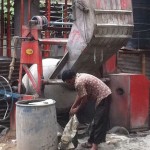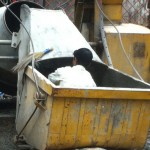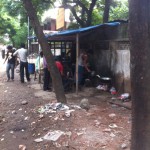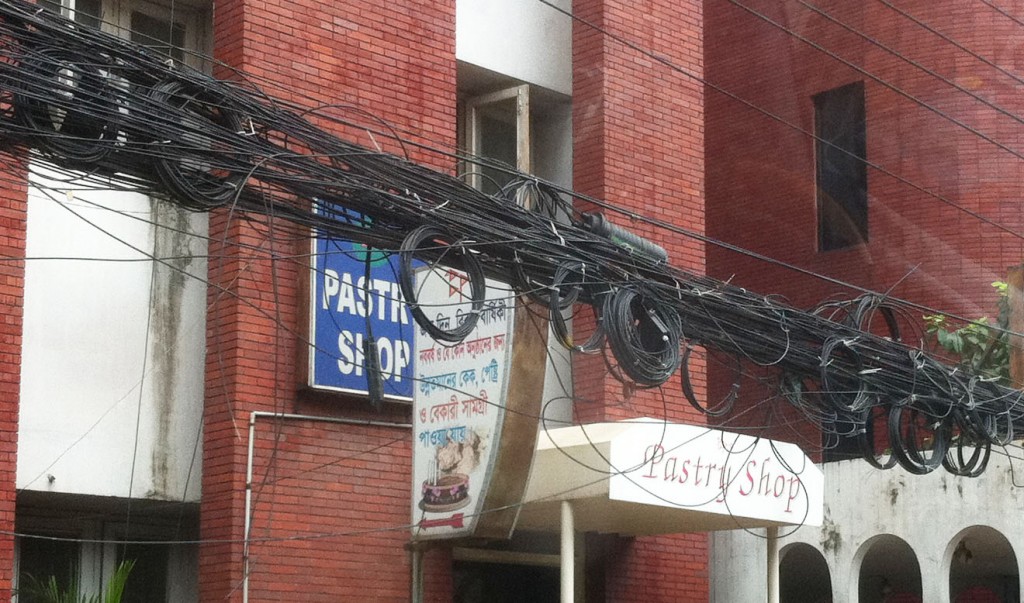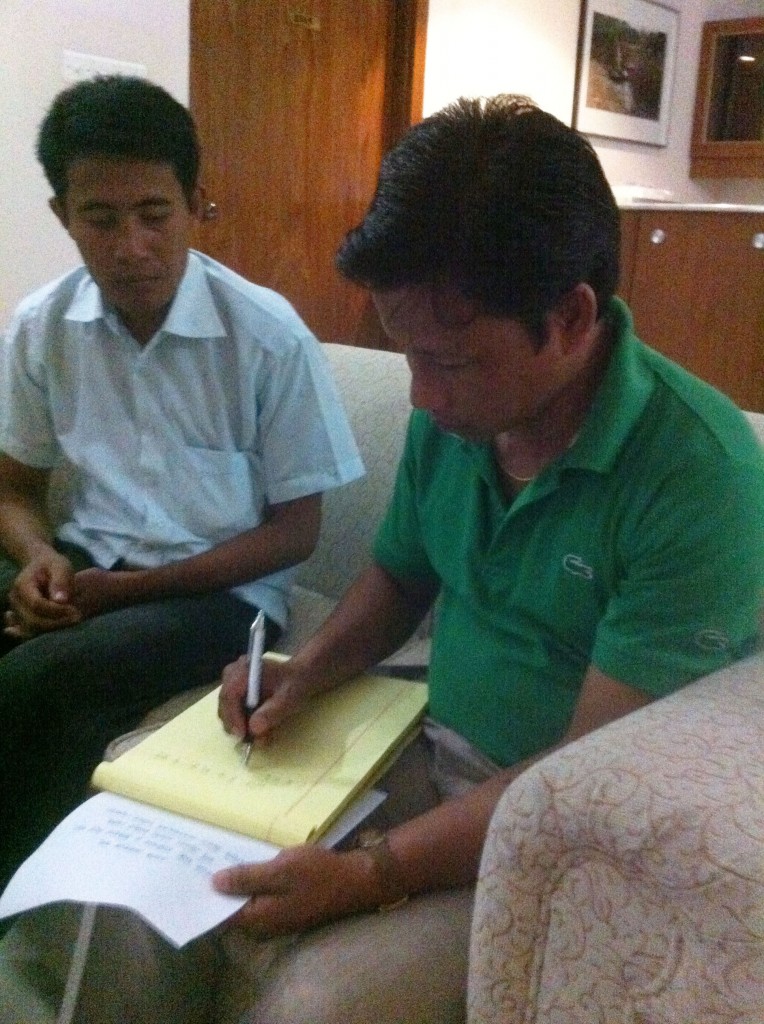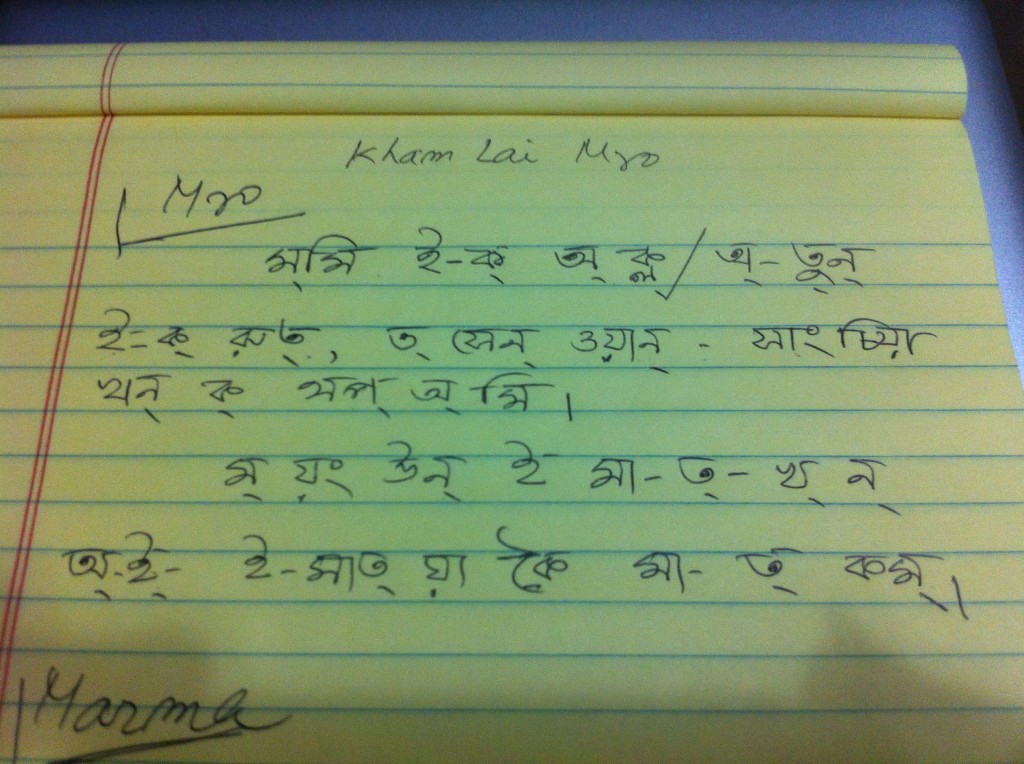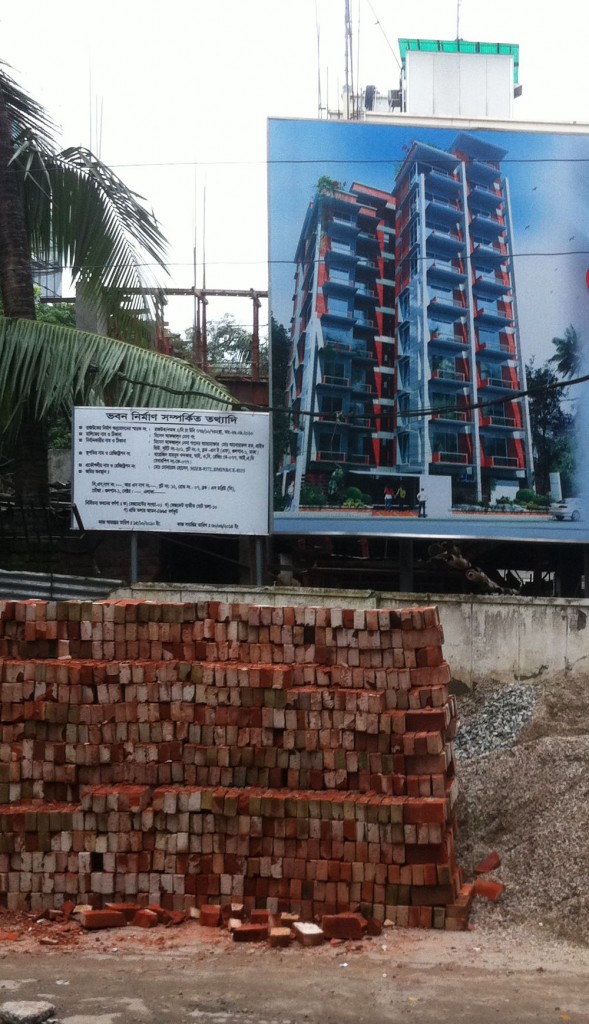 The other evening, as I was heading out through the upper-middle-class residential district of Gulshan to dinner with friends, I quipped, “Every road in Gulshan comes with its own pile of sand.”
The other evening, as I was heading out through the upper-middle-class residential district of Gulshan to dinner with friends, I quipped, “Every road in Gulshan comes with its own pile of sand.”
Actually, sand is just the start of it. Road 12, the road I’m staying on, in what would in most capital cities be the embassy district, is maybe a hundred yards long but currently has three separate piles of bricks, a large stack of bags of cement, two separate piles of demolition rubble, several stacks of concrete slabs and a variety of other assemblages that might be symptoms of either creation or destruction. That evening, as we were returning through the uneven, unlit streets around midnight, our driver nearly impaled the car on a bundle of bamboo poles, each maybe 20 feet long—the South Asian equivalent of scaffolding—tied to a small cart in the road.
Even though today is technically yet another day of general strike, the steady hammering of manual construction echoes up and down the leafy street. A makeshift bamboo-and-blue-tarp café, the kind found all over south Asia, has been created against the wall of one of the villas, and half-a-dozen guys are standing or sitting around it, sipping tea amid a debris of tossed-out cans, cigarette cartons, paper and plastic. A cement mixer churns in front of the shell of a concrete building under construction; a boy descends a ladder from the cavernous second floor, a woven basket of sand on his head.
The entire scene has an air of slightly grim maintenance, of a step backwards driving each step forwards. The monsoon mud has been scraped into manageable heaps next to the deep guttering. Within the past 24 hours, one massive pothole at the intersection at the end of Road 12 has been loosely filled with what seems to be shattered pottery, which makes a crunkling sound when driven over. Another deep pothole, almost a sinkhole, has had a large tree branch thrust into it so vehicles won’t drive into it and emerge in, say, Cleveland.
All these apparently random observations on urban construction are not because I’m planning a late-in-life career change and qualifying as a civil engineer. They’re because of Blade Runner.
Back in the first of these Bangla blog entries, I wrote:
“As global warming melts the polar ice cap, that moisture has to go somewhere. Some of it causes the oceans to rise, or in our local case Lake Champlain, which set new records for flood levels and then refused to go back down. Much of it, though, falls as rain or hangs in the air as water vapor. Some say the world will end in fire, Robert Frost wrote, and some in ice. My hypothesis is that it will end in rain. It’s not the temperature that will be the end of us; as they say in Florida, it’s the humidity. Or to give this situation a more imaginable form, think of the landscape of Blade Runner: the world as one great collapsing city, under endless rain.”
I wanted to know whether Dhaka offered a glimpse into the future. Into the end of the world, in fact.
Sure enough, we’ve had humidity so thick you can virtually stand a spoon up in it. Sure enough, the city of Dhaka is not unlike the makeshift, wired-together, ancient-and-modern-used-parts Los Angeles of Blade Runner. And interestingly, both the fictional city and the real one speak a constant mélange of several languages in the same sentence, the most obvious sign of the globalization of culture, or at least of expression.
So why is it that Dhaka doesn’t have that depressing, dark, verge-of-collapse feel, that surly Philip K. Dick apocalypse?
Mainly, it’s that Ridley Scott’s view of the end of humankind is driven by the dystopian view that the end of the world will come because we caused it. We will get the future we deserve.
I don’t get that feeling in Bangladesh at all. Even though Bangladeshis themselves complain about their government, the pollution and the traffic, it’s clear that what’s going on here is not the self-inflicted decay of a once-great civilization. It’s the result of an ongoing 40-year struggle to survive.
Let me explain.
No country has ever had a more painful birth.
When East Pakistan pushed for independence from West Pakistan and the Awami League, a nationalistic party, won a majority in the 1971 national elections, West Pakistan sent in troops on a massive scale. One of the worst acts of genocide in modern times took place, with the Pakistani Army killing somewhere between 200,000 and 3,000,000 Bengalis. Mass graves have been discovered as recently as 1999.
When it became clear that a combination of Bengali and Indian troops were gaining the upper hand and that the Pakistani Army would have to withdraw, orders were sent down to cripple the infant nation by systematically killing its doctors, engineers, artists, writers and teachers, focusing in large part on students and faculty at Dhaka University. The archives suggest that the Pakistani army, with the assistance of local collaborators, systematically executed an estimated 991 teachers, 13 journalists, 49 physicians, 42 lawyers, and 16 writers, artists and engineers.
Another way in which Pakistan tried to kill the young country at birth was by torturing, raping and killing its women. Some 200,000 women were raped; the Pakistani Army captured young women from Dhaka University and middle-class homes and kept them as sex slaves in their barracks. It was the tactics of the armies of the disintegrating Yugoslavia, only 20 years earlier.
To say that the Bengalis who founded Bangla Desh (the land of Bengal) were forced to start from scratch, then, is like saying the Donner Party had a tough winter. It’s an amazing achievement the country isn’t still that pile of sand, that cart of bamboo.
The country is also extraordinarily vulnerable to natural disaster. The Bay of Bengal, narrowing and getting shallower as it approaches Bangladesh, concentrates wind and water to such effect that in 1991 a cyclone struck Chittagong at 150 m.p.h., driving a storm surge twenty feet high into a coastal area that at the driest of times is barely above sea level. More than 130,000 people were killed, some ten million were left homeless, and the resulting spread of water-born infections killed thousands more. The same scenario has been repeated depressingly often before and since.
The atmosphere in Dhaka, then, no matter how humid, is not one of caustic dystopia or fin-de-siecle ennui; it’s one of a people trying, literally, to keep their heads above water.
I say “literally,” because a new danger is emerging: of all the countries of the world, Bangladesh is most vulnerable to the effects of global warming—not only because a single-meter rise in ocean level will drive hundreds of thousands of people from their homes, throwing extra stress on the already overcrowded cities, the economy and the healthcare system, but because one of the features of global warming seems to be more extreme weather forms: storms like the 1991 cyclone may become the rule than the exception.*
This danger, more than any of the other difficulties facing Bangladesh, is the only one that might fall into that Blade Runner you-humans-will-get-what-you-deserve category. So any time you hear someone denying the validity of the science involved or insisting it be called “climate change” rather than “global warming,” tell them to spend a few weeks in Bangladesh. They’ll be picketing the governments and the major corporations before the month is out.
* I’m grateful to the research of Farhana Haque for information that forms the basis of this paragraph.
At the risk of sounding relentlessly self-promoting, if you liked this piece you’ll almost certainly like my book Thirty Percent Chance of Enlightenment, available directly from me or from fine bookshops everywhere.

